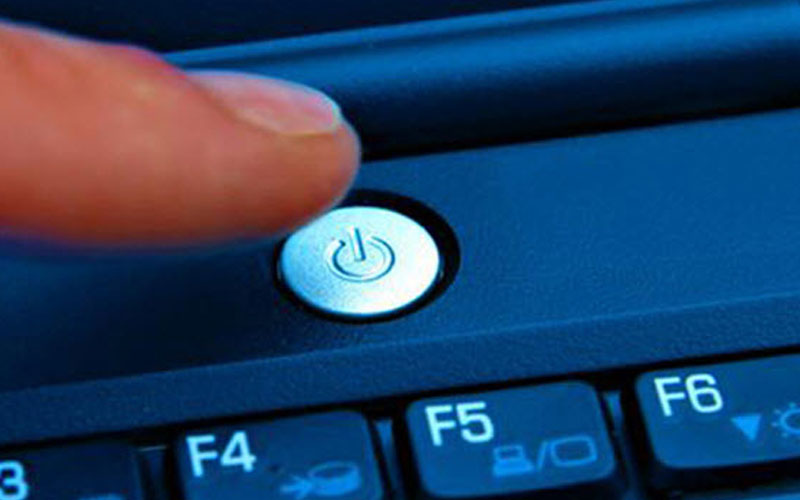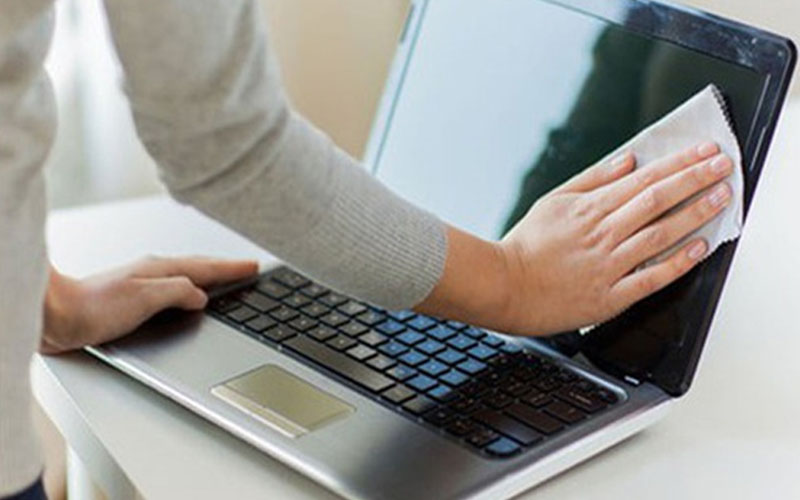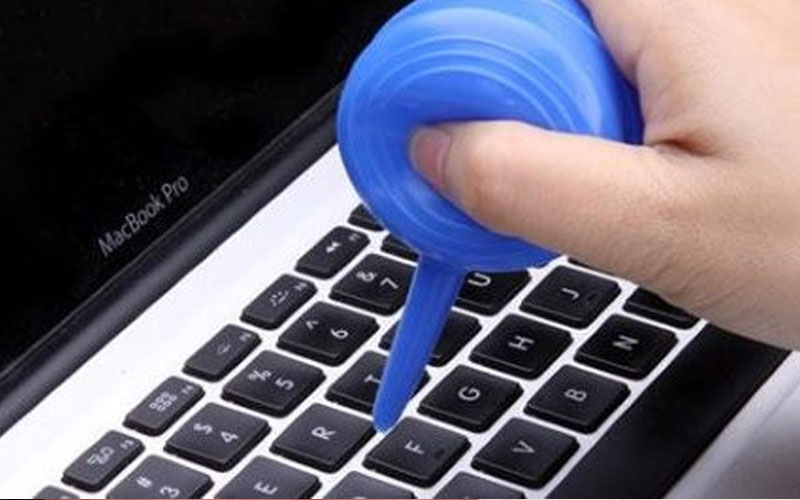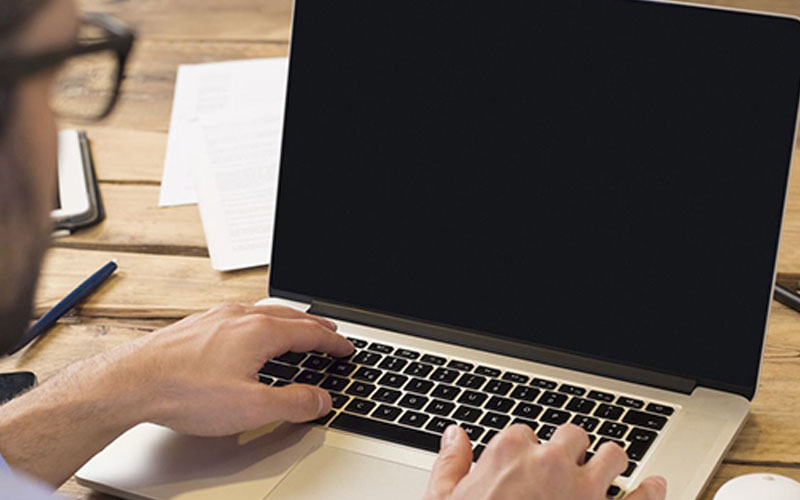Spilling liquid on your laptop or other electronic devices is inevitable. However, addressing this issue is not as difficult as it seems. Here are the steps to quickly and effectively rescue your laptop:
1 Guide to Fixing a Water-Damaged Laptop
If you accidentally spill water on your laptop, follow these instructions:
Step 1 Power Off the Laptop and Unplug
The first thing to do when your laptop gets wet is to quickly turn it off by pressing the power button and unplugging the power source, such as the charging cable, to prevent electrical short circuits that could lead to explosions or damage to your laptop.
 Power off the laptop
Power off the laptop
Step 2 Move the Laptop Away from the Liquid
Doing so will minimize further exposure to liquids and reduce the risk of electrical shocks.
Step 3 Flip the Laptop Over and Remove the Battery, if Possible
You should flip the laptop over and, if possible, remove the battery. However, some laptops and MacBooks have non-removable batteries.

</li>
<li>
Mouse
</li>
<li>
Laptop power cord
</li>
<li>
Memory cards
</li>
</ul>
<h4>
<b><steps>Step 5</steps> Place the Laptop Upside Down on a Flat Surface with a Towel</b><br />
</h4>
<p>
<b>Position the laptop at a 45-degree angle and place it upside down on a flat surface with a highly absorbent towel</b> to help drain the liquid from the machine and speed up the drying process. You can also <b>use a fan or a cold hairdryer</b> to accelerate the drying.
</p>
<p>
<img decoding=) Place the laptop upside down on a towel
Place the laptop upside down on a towel
Step 6 Wipe Down the Laptop to Remove Liquid
Use a clean cloth to wipe down the laptop’s exterior, including the front, back, casing, and keyboard, while keeping it upside down to prevent liquid from seeping back into the machine.
 Wipe down the laptop to remove liquid
Wipe down the laptop to remove liquid
Step 7 Ensure No Static Electricity Before Touching Internal Components
Before touching the RAM or hard drive, make sure to discharge any static electricity from your body by touching a metal object. This will prevent static electricity from damaging the laptop’s circuits.
Step 8 Disconnect Internal Hardware if Possible
We do not recommend that you attempt to disconnect internal hardware unless you are experienced in doing so. Instead, take your laptop to a service center for timely repair and maintenance.
 Disconnect internal hardware if possible
Disconnect internal hardware if possible
Step 9 Dry the Interior of the Laptop
Use a small, absorbent cloth to gently wipe away any remaining moisture from the laptop’s interior. Be careful not to damage any components.
Step 10 Clean and Remove Any Dried Residue
Use a small cloth to wipe away any dried residue inside the laptop, or use compressed air to blow out any remaining dried residue.
 Clean and remove dried residue
Clean and remove dried residue
Step 11 Allow the Laptop to Dry for at Least 24 Hours Before Reassembling
Let the laptop air dry for at least 24 hours before reassembling it, and make sure it is kept in a well-ventilated and dry area. Do not use a hot hairdryer as the heat can further damage the internal components; instead, opt for a cold hairdryer or let it air dry.
Step 12 Reassemble the Laptop and Power It On
Once everything is dry, reassemble the laptop and turn it on. If you notice any abnormalities, such as distorted audio or a distorted display, take it to a service center immediately.
 Reassemble the laptop and power it on
Reassemble the laptop and power it on
Step 13 Remove Any Remaining Residue, if Necessary
If there is any oily residue left, use a damp cloth to gently wipe it away, followed by a dry cloth to remove any remaining moisture.
2 Tips to Prevent Liquid from Spilling on Your Laptop
Laptops are essential tools for remote workers as they contain important data. To protect your laptop from liquid damage, consider the following tips:
Avoid Eating or Drinking While Using Your Laptop
Not only can this lead to accidental spills, but it can also cause health issues such as indigestion or stomach ulcers. It can also create unhealthy eating habits, especially in children. Try to control this habit and avoid doing it frequently.
 Avoid eating or drinking while using your laptop
Avoid eating or drinking while using your laptop
Keep Your Laptop Away from Liquids
Invest in protective accessories such as a silicone keyboard cover and a laptop case. When not in use, keep your laptop in a bag to protect it from rain or accidental spills.
 Keep your laptop away from liquids
Keep your laptop away from liquids
These steps will help you rescue your laptop in case of liquid damage, and the provided tips will help you minimize the risk of such incidents. Hopefully, you will find this information useful.

































